Perennial lemon balm is easy to multiply and grow yourself - both in the garden and on the balcony. A rich harvest is almost certain.
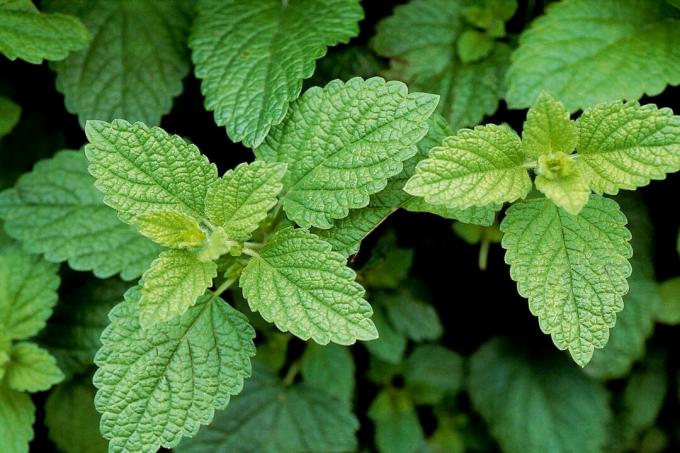
At the lemon balm (melissaofficinalis) is a Mediterranean herb with a very long lifespan. The perennial, fruity plant can stay in the garden for twenty to thirty years without any problems. Thanks to its enormous growth potential, it spreads quickly and needs to be kept under control so that it doesn't take over the entire garden over time.
contents
- Lemon balm: origin and properties
- The most beautiful types and varieties
-
Planting lemon balm: location, sowing and Co.
- The right location for lemon balm
- sowing and planting
- Good and bad plant neighbors
-
Care of the lemon balm
- Water and fertilize
- Cut lemon balm
- Common pests and diseases
- Grow lemon balm
- Is lemon balm hardy?
Lemon balm: origin and properties
how sage (Salviaofficinalis) or thyme (Thymus vulgaris) joins the lemon balm (Melissa officinalis
) in the mint family (Lamiaceae). Originally from southern and south-eastern Europe, it can now be found throughout Europe and even Asia. The perennial perennial grows upright and can reach a height of 120 cm. Their leaves are reminiscent of those of stinging nettles (Urtica dioica). From June, the white or whitish-pink lemon balm flowers appear, which also attract a number of insects. In addition to growing in beds, lemon balm can also be cultivated in pots. If you rub the lemon balm leaves between your fingers, a light lemon scent fills your nose. The aroma ensures its popularity as a spice. Special ingredients also help lemon balm to be effective in cases of inner restlessness or stomach and intestinal problems. It is no coincidence that the mint family was named medicinal plant of the year in 1988. Cultivating the fragrant herb in your own garden is definitely worthwhile. Lemon balm is also known as lemon balm, lemon herb or garden balm.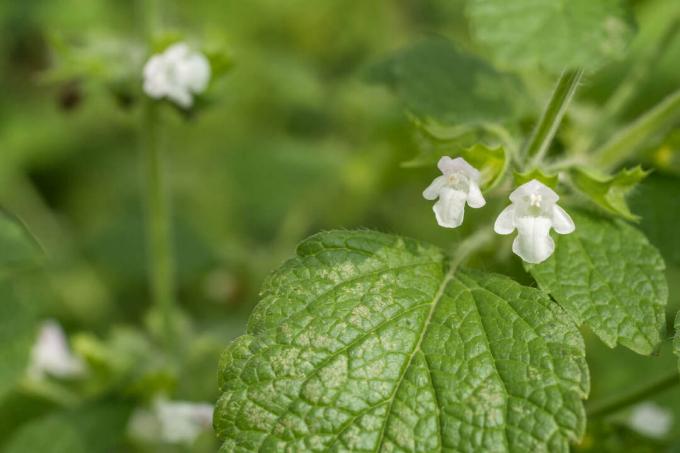
The most beautiful types and varieties
There are two subspecies of lemon balm. In addition to the lemon balm species, there are a number of varieties that differ primarily in their leaf color.
- lemon balm (Melissa officinalis ssp. officinalis): The more well-known subspecies is the lemon balm, which remains rather small at around 60 cm and smells strongly of lemon.
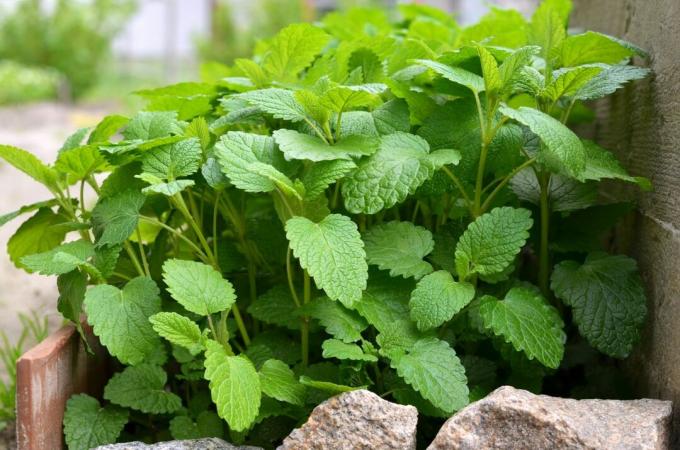
- Crete lemon balm (Melissa officinalis ssp. altissima): The other subspecies grows to about 90 cm and smells more like tangerine and lime. Although the name suggests otherwise, the Crete lemon balm is also hardy down to -29 °C.
- Golden Lemon Balm (Melissa officinalis ‘All Gold’): In addition to the lemony scent, this variety scores with golden yellow leaves.
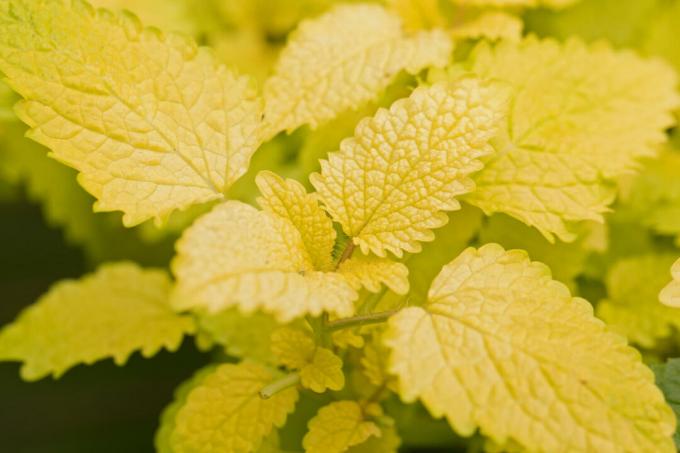
- Dwarf Lemon Balm (Melissa officinalis ‘Compacta’): At around 40 cm, this variety stays smaller than the species.
- Yellow colored lemon balm (Melissa officinalis ‘Variegata’): The yellow-green patterned leaves make this variety a real eye-catcher.
- Binsuga Lemon Balm(Melissa officinalis ‘Binsuga’): The high content of essential oils makes this variety extra aromatic. It is also very vigorous and can be used ideally for tea preparation.
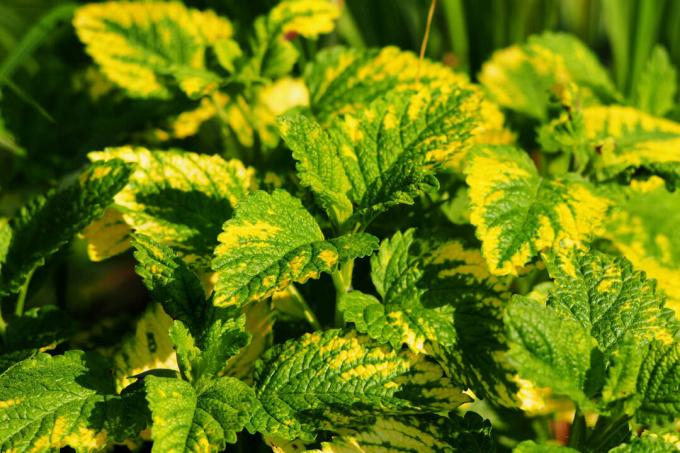
Tip: The White Melissa (Nepeta cataria ssp. citriodora) is a subspecies of catnip and is not a member of the lemon balm family, although its leaves also taste like lemon.
Planting lemon balm: location, sowing and Co.
If the lemon balm is in the right location, it usually spreads quickly and thrives magnificently.
The right location for lemon balm
Due to its origin from the Mediterranean region, the lemon balm does not mind a sunny location even in midsummer. Even a place in partial shade does not reduce the vigor of the perennial herb. It likes fresh, loose, humus-rich soil and has moderate nutrient requirements. Lemon balm can be sown directly in the garden or kept on the balcony or terrace. Since it grows very wide and bushy, it should definitely stand alone.
Lemon balm in the pot: When growing lemon balm in a pot, the soil should be as permeable as possible and have sufficient nutrient content to cover the needs of the mint family. Here, for example, ours is suitable Plantura organic universal soil, which can store water for a long time without getting waterlogged. It consists of natural ingredients and provides the lemon balm with all the necessary nutrients in the first few months. To avoid waterlogging, a drainage layer made of potsherds is recommended.
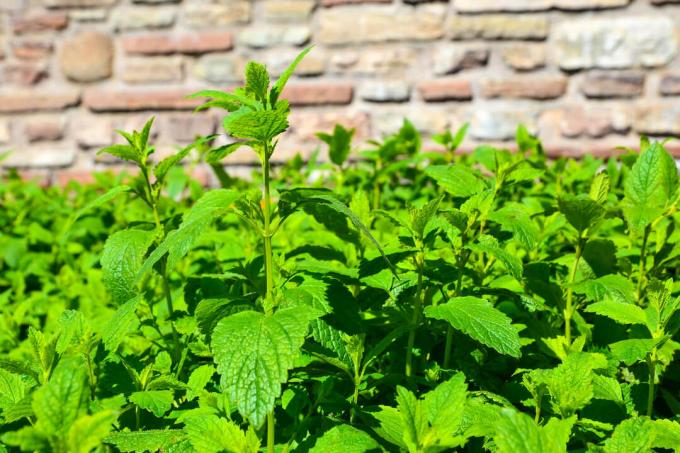
sowing and planting
The seeds can be spread in a warm house as early as February and young plants can be brought forward for planting out. As is usual for Mediterranean herbs, sowing directly into the bed can only take place once the danger of night frosts has passed. This is given from mid-May. There should be a distance of about 20 cm between the plants. In any case, the soil must be loosened up well. If the soil is very sandy or waterlogged, it should be repaired with humus-rich potting soil.
Also to note: Lemon balm needs light to germinate, which is why the seeds must not be covered with substrate. For germination to occur, the temperature should be around 20 °C. Moisten the substrate only slightly, it must not be soaking wet. If you bought a specimen in a pot, you should definitely repot it in fresh, high-quality soil or plant it outside in a suitable location for the lemon balm from May.
Tip: If one herbal spiral owns, the lemon balm can also be planted here. It prefers to grow midway up the spiral.
Good and bad plant neighbors
Lemon balm goes well with almost all perennial herbs such as thyme and mint. Neighboring plants should have the same site requirements. It is not recommended to mix it with wormwood and annual herbs, especially basil.
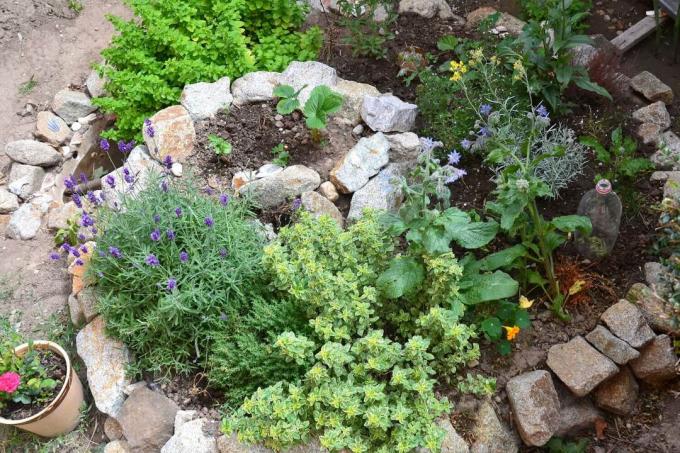
Care of the lemon balm
Not only is its pleasant scent convincing, but also its robustness, because lemon balm is very easy to care for.
Water and fertilize
Lemon balm can withstand a certain degree of drought - thanks to its original, Mediterranean origin. But she is still happy about a regular watering. When growing in pots, depending on the weather and the size of the planter, it may even have to be watered daily at times. But if you give too much water, you damage the perennial herb. Persistent wetness can quickly lead to infestation with root fungi, which completely stretch the plant. So make sure that the lemon balm never stands in water.
When growing in a bed, it is sufficient if the lemon balm has been left to stand for a long time, a primarily organic fertilizer like ours every few years Plantura organic universal fertilizer or alternatively incorporate compost into the soil. When growing in a pot, you can replace the substrate every year when repotting the Lemon Balm Be sure that the lemon balm is adequate with the required nutrients is supplied.
Cut lemon balm
Thanks to the enormous growth potential of lemon balm, you really can't go wrong when cutting. Even if you cut back several times a year, the herb will always sprout unmolested. However, we recommend refraining from a last radical pruning shortly before winter. With the dried shoots, the lemon balm protects itself from frosty winter temperatures.
Common pests and diseases
As a rule, the lemon balm is not attacked by diseases or pests. If signs of an infestation should be seen, this can have the following causes.
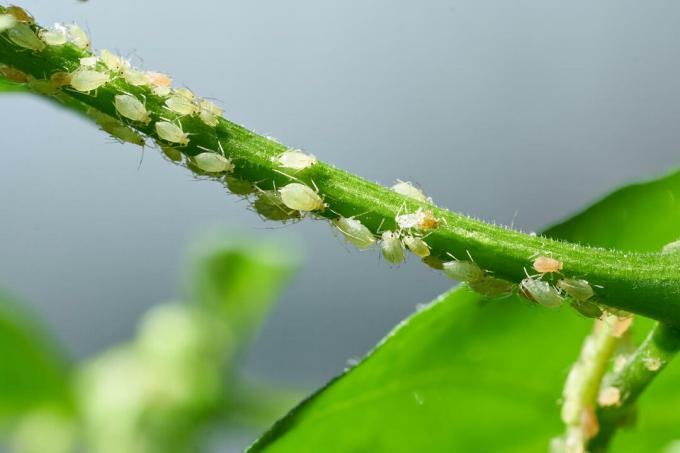
- Mildew: If the leaves have a whitish coating, powdery mildew has probably struck.
- Rust: If, on the other hand, you see brown-red spots on the lemon balm leaves, it is probably an infestation by a rust fungus.
- Aphids: An infestation by aphids can be recognized directly by the small aphids themselves that cavort on the plant.
A strong pruning usually helps against the diseases and pests mentioned above. They often occur because the soil is too nutrient-rich, when the plant has too much nitrogen available.
Grow lemon balm
There are various horticultural methods to propagate the lemon balm. For Melissa officinalis three of them are suitable.
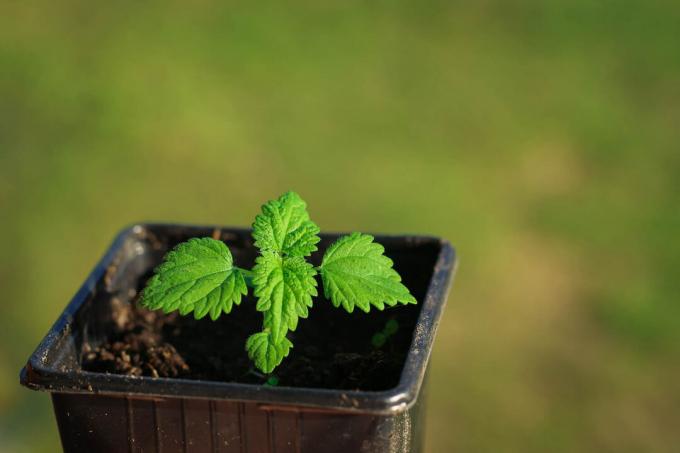
sowing: The lemon balm multiplies by self-sowing all by itself. However, it is also possible to collect the seed and spread it at the desired location. When the fruits have turned brown, they are ripe and can be removed. The seed is then extracted, dried and sown as usual in the spring.
cuttings: From late spring to early summer, there are perfect temperature and light conditions to propagate lemon balm from cuttings. To do this, the shoot tips of young, juicy shoots are simply removed, which should not yet have any flowers at this early stage. Blossoms or flower buds are undesirable on cuttings as they reduce rooting success. Five to ten centimeters is the optimal length of lemon balm cuttings. The leaves are removed from the lower area, which is placed in a special cuttings substrate. Ours, for example, is suitable for this Plantura Organic Herb & Seed Soil from natural ingredients. Our soil is peat-free and does not pose any danger to pets or garden animals. It is best to mix in some sand to improve the conditions for the cuttings. A high-humidity environment, such as that easily created in a windowsill mini-greenhouse, favors the formation of new roots on the cuttings.

division: The lemon balm forms a large number of runners underground. So there is the possibility of multiplying the lamiaceae simply by dividing them. The time just before new growth in spring or autumn is ideal for this. Existing specimens are dug up, cut up with a spade and the pieces of lemon balm are replanted. After that, it is important not to forget the first watering of the divided plants.
Is lemon balm hardy?
Lemon balm is hardy and can withstand temperatures down to -30 °C. As previously mentioned, when cultivating in a bed, the above-ground parts of the plant that have died in autumn are ideal for protecting the lemon balm from frost damage. You can also cover them with a little leaves or twigs. If you have planted the lemon balm in a pot, you can cover it with standard garden fleece or you can bring it into the house. However, there should be temperatures of around 5 to 10 °C in a bright place so that the lemon balm can remain dormant and save energy for the spring new shoots.
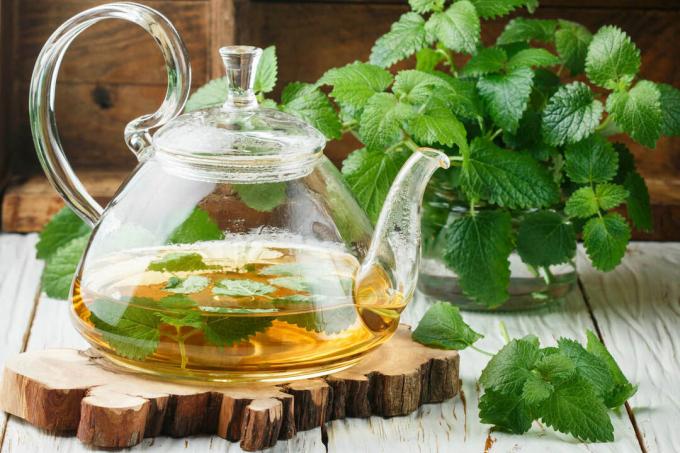
Anyone who has successfully grown the versatile plant in the garden will be rewarded with a rich harvest. How you die Harvest, preserve and use lemon balm correctly, we reveal here.



